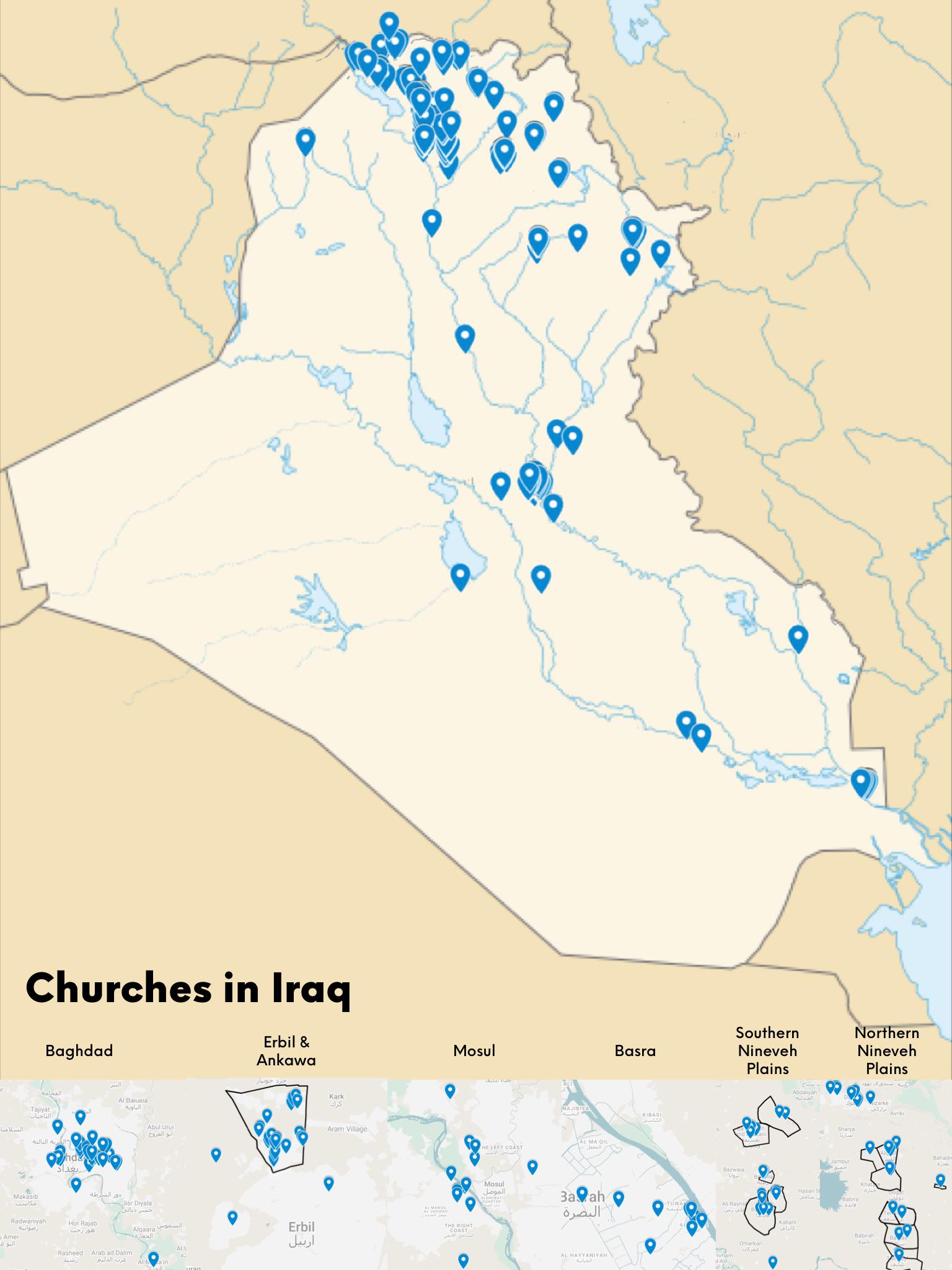Map of Churches in Iraq


Alex Cartwright
Senior Cartographer & GIS Specialist
Alex Cartwright is a renowned cartographer and geographic information systems specialist with over 15 years of experience in spatial analysis and data...
Geographic Analysis
What This Map Shows
The "Map of Churches in Iraq" provides a detailed visualization of the locations and distribution of churches across the country. This map highlights a rich tapestry of religious architecture and cultural heritage, illustrating the presence of various Christian denominations in a predominantly Muslim nation. Each dot or marker on the map represents a church, allowing viewers to grasp the geographical spread and concentration of these places of worship.
Deep Dive into Churches in Iraq
Interestingly, Iraq has a long and complex history with Christianity, dating back to the early days of the faith. Today, several denominations can be found within the country, including the Chaldean Catholic Church, Assyrian Church of the East, and various Protestant communities. These churches not only serve as spiritual centers but also as important cultural and community hubs.
The number of churches has fluctuated dramatically over the years due to various historical and socio-political factors. The rise of the Islamic State (ISIS) in the early 2010s led to widespread persecution of Christians, resulting in the displacement of many communities. According to estimates, the Christian population in Iraq has decreased from around 1.5 million in 2003 to less than 250,000 today. This decline is reflected in the map, as many churches in areas like Mosul and Nineveh have been abandoned or destroyed.
Despite these challenges, churches in Iraq remain symbols of resilience. For instance, the historic Mar Elia Church in Erbil has become a refuge for displaced Christians and continues to provide community services. Other churches, like the St. George's Church in Baghdad, have adapted to the changing landscape by opening their doors to people of all faiths, promoting interfaith dialogue and understanding.
The architectural styles of these churches vary significantly, often reflecting the historical influences that have shaped Iraqi society. From the ancient stone structures of the Chaldean churches to modern designs, the diversity in architecture tells the story of the various communities that have thrived over centuries. Interestingly, many churches also feature intricate decorations and artwork that highlight the region's rich cultural heritage, making them not just places of worship but also tourist attractions.
Regional Analysis
When we analyze the map regionally, it becomes evident that the distribution of churches in Iraq is uneven. Northern Iraq, particularly the areas around Erbil and Dohuk, has historically had a stronger presence of Christian communities. This is partly due to the relative stability of the Kurdistan region, which has provided a safer environment for Christians compared to the central and southern parts of the country.
In contrast, cities like Mosul and Baghdad have seen significant declines in church populations. The map clearly marks the absence of churches in areas heavily affected by conflict and violence. For instance, Mosul was once home to a vibrant Christian community, with numerous churches that showcased the city's diverse cultural fabric. However, many of these churches have been destroyed or repurposed since the rise of ISIS.
Interestingly, while some regions have lost their churches, others are witnessing a resurgence. In the Kurdistan region, efforts to rebuild and restore damaged churches are underway, and new congregations are emerging. The map reflects this by showing a concentration of active churches in safer areas, juxtaposed against those that have become silent witnesses to history in war-torn regions.
Significance and Impact
The presence and distribution of churches in Iraq matter for several reasons. Firstly, they are crucial for understanding the historical and cultural identity of Iraq. Churches have been integral to the communities they serve, providing not only spiritual guidance but also social services and community cohesion.
Moreover, the decline of churches and Christian populations raises profound questions about religious freedom, tolerance, and the future of minority communities in Iraq. As the country continues to stabilize, the survival of these churches will play a critical role in fostering dialogue between different religious groups. Interestingly, there is a growing recognition among the Iraqi government and international organizations of the need to protect these cultural sites, as they are vital to Iraq's heritage and diversity.
Looking ahead, the future of churches in Iraq remains uncertain. While there are signs of hope, such as rebuilding efforts and interfaith initiatives, ongoing challenges from sectarian tensions and political instability persist. The map serves as a poignant reminder of what has been lost and what remains, urging us to consider the broader implications of religious diversity in a complex geopolitical landscape.
Visualization Details
- Published
- August 11, 2025
- Views
- 128
Comments
Loading comments...